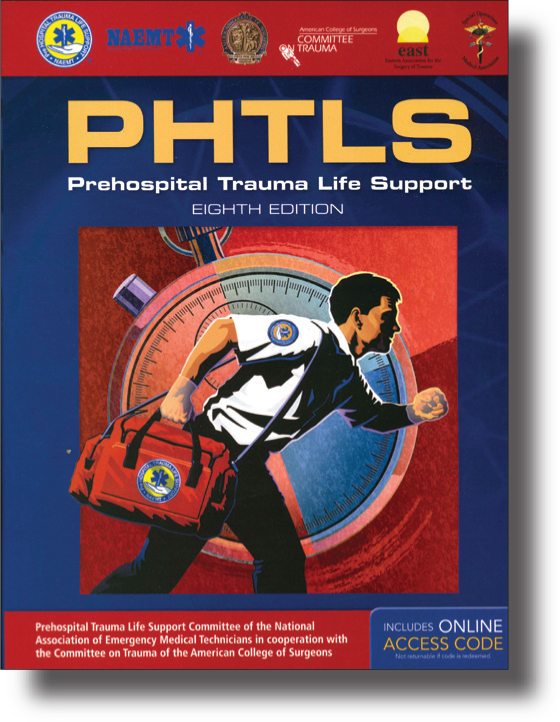Prehospital Trauma Life Support

Our American cousins have long since incorporated the management of major trauma into paramedic practice. Indeed, the evolution of trauma networks in this country was based in no small part on the model incorporated on the other side of the great pond. So it is of no surprise that the associated literature has evolved in tandem—witness the 8th edition of this text.
While celebrating this wealth of material I am, if nothing else, consistent in my review of it, principally that a lot of the literature on trauma needs to be read in conjunction with that which is more specific to the underlying anatomy and physiology. And so it is with this. Highlighting procedures and techniques is one thing, understanding
Why they are performed is another entirely. It is not unreasonable for a paramedic to have to read widely on a subject as diverse and complicated as trauma, yet the authors have still managed to capture most aspects of major trauma in this volume.
Even in accepting that elements of trauma such as mass casualty management and terrorist attacks are developing their own body of knowledge and skills, a credible overview is presented here. Another specialist area, paediatric trauma, is perhaps a little lacking in substance, although the priorities of care are still well identified. This is reinforced further through an excellent chapter on the ‘golden principles’ of pre-hospital trauma care, which is worth a read in itself.
Trans-Atlantic differences are not difficult to spot—for example the section on airway management—so the reader should acknowledge that this has been written with an American readership in mind. But this book does demonstrate that it isn't just the Nancy Caroline legacy which prevails in paramedic literature from the US. The fact that this 8th edition has been endorsed by a number of professional colleges and trauma associations in America is testimony in itself. You can add my name to that list. Recommended.

